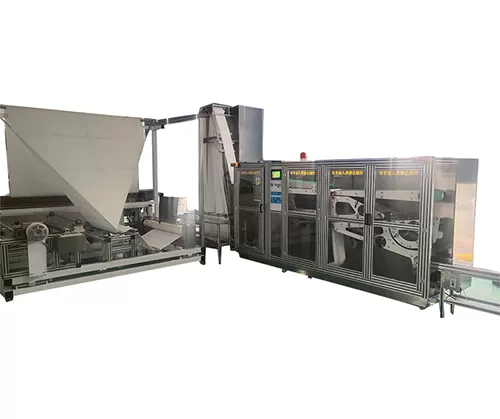In the healthcare industry, the importance of high-quality medical apparel cannot be overstated. Medical professionals, such as doctors, nurses, and surgeons, rely on their attire not only for comfort and protection but also for infection control and professional appearance. The introduction of doctors wear making machines has played a transformative role in improving the quality, efficiency, and consistency of healthcare garments. These machines are designed to streamline the production of doctors' uniforms, scrubs, surgical gowns, and other medical apparel, ensuring that they meet the stringent requirements of the healthcare sector.

One of the primary benefits of doctors wear making machines is their ability to deliver high levels of precision and consistency in fabric cutting, stitching, and finishing. Traditional methods of garment production often led to variations in size, stitching quality, and fabric alignment, resulting in inconsistencies that could impact the overall comfort and functionality of the apparel. In contrast, advanced machines are equipped with state-of-the-art technology to automate the production process, reducing human error and increasing uniformity.
Doctors wear making machines use computer-aided design (CAD) systems to create accurate patterns that can be replicated consistently. This ensures that each garment is produced with precise measurements, providing a comfortable fit for healthcare professionals who often work long hours. Additionally, the machines can handle a wide range of fabrics, from breathable cotton and polyester blends to specialized materials such as antimicrobial and fluid-resistant textiles, which are essential for protecting medical staff from exposure to pathogens. This flexibility enables manufacturers to create a wide range of medical apparel tailored to specific needs.
In the healthcare industry, hygiene and infection control are top priorities. Medical attire is an essential part of protecting both patients and healthcare workers from cross-contamination. Doctors wear making machines contribute significantly to enhancing hygiene standards by using fabrics that are treated to resist bacteria, fluids, and stains. Many machines are designed to automatically sew and finish garments with reinforced stitching, ensuring durability and preventing gaps or weak points that could compromise the protective properties of the apparel.
The machines can also produce garments with precise specifications for fluid resistance, making them ideal for use in environments like operating rooms, emergency rooms, and intensive care units. For example, surgical gowns and isolation gowns produced by these machines are made with materials that are resistant to bodily fluids and other contaminants, ensuring that healthcare professionals are adequately protected during critical procedures. The seamless integration of technology into the manufacturing process also reduces the risk of contamination during production, as automation minimizes human contact with the final product.
The introduction of automated doctors wear making machines has revolutionized the manufacturing process by significantly improving efficiency and reducing labor costs. Unlike traditional methods, which require manual labor at every stage, these machines automate repetitive tasks such as cutting, sewing, and finishing. This not only speeds up production but also reduces the need for a large workforce, cutting down on labor costs for manufacturers.
The time saved by automation allows manufacturers to produce larger quantities of medical apparel in less time, meeting the increasing demand for healthcare garments. This is particularly important in times of medical crises, such as the COVID-19 pandemic, when the need for personal protective equipment (PPE) surged. By ensuring a rapid and consistent production process, doctors wear making machines help manufacturers respond quickly to emergencies, ensuring that healthcare workers are properly equipped with the protective apparel they need.
Moreover, these machines are designed to minimize material waste. With precise cutting and pattern-making capabilities, manufacturers can maximize the use of raw materials, contributing to more sustainable production practices. Reducing waste also lowers production costs, enabling manufacturers to offer affordable pricing for healthcare facilities, hospitals, and clinics.
Comfort is a critical factor for healthcare workers who spend long hours on their feet, often in physically demanding environments. Doctors wear making machines allow for the customization of garments to meet individual preferences, ensuring that medical professionals have attire that is comfortable and functional. The machines can adjust the fit, provide a range of sizes, and even incorporate ergonomic design features that enhance comfort, such as stretchable materials or strategically placed vents for breathability.
Additionally, these machines enable the production of garments that incorporate features like antimicrobial coatings, moisture-wicking fabrics, and pockets designed for medical tools and devices. Customization options can include different colors, designs, and logos to represent a hospital or medical institution's brand, giving healthcare professionals a sense of identity and professionalism.
The role of doctors wear making machines in enhancing healthcare apparel quality is undeniable. By improving fabric precision, ensuring hygiene and infection control, increasing production efficiency, and offering customization options, these machines have revolutionized the manufacturing of medical apparel. As the healthcare industry continues to evolve, the role of advanced manufacturing technology in providing high-quality, functional, and protective clothing for medical professionals will remain a cornerstone of healthcare innovation.